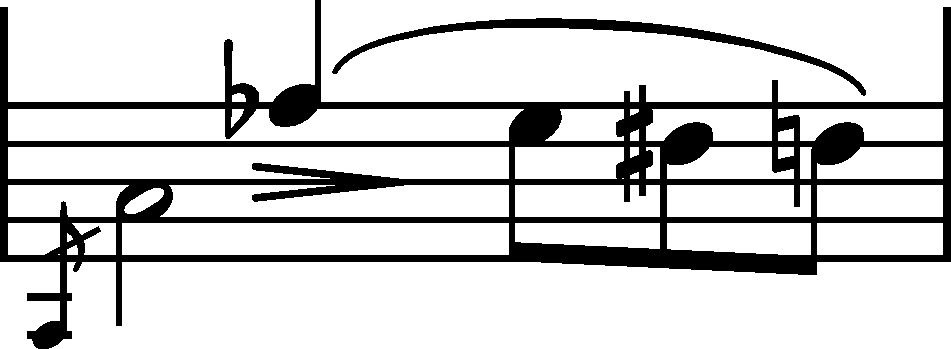



The notation of the 1st half of this bar in A is unclear: erroneous or at least illogical. According to us, it is a result of applying corrections, which were either unfinished or resulted from a misinterpretation of the existing notation. Aligning the notes in accordance with the part of the R.H. probably reflects the 1st phase of the notation, which could be as follows:  .
.
Therefore, it is a faultlessly written version, almost identical with bar 34. The crotchet value for a is additionally confirmed with a clear long accent under this note. At the time of adding a quaver tie under c and a
is additionally confirmed with a clear long accent under this note. At the time of adding a quaver tie under c and a notes and a new stem for the minim, Chopin could have wanted to:
notes and a new stem for the minim, Chopin could have wanted to:
- correct the rhythm, probably to the one in FE (→GE,EE). However, the correction would have been inaccurately performed (unfinished?), as the 1st note remained a grace note and nothing suggests that it could have been considered as a common quaver; moreover, a
 preserved the crotchet stem, which would be meaningless if the note was supposed to last only a quaver;
preserved the crotchet stem, which would be meaningless if the note was supposed to last only a quaver; - change the notation by mistake, being assured that it is bar 39. One could also imagine that Chopin, soon after writing bar 39, already concentrated on writing next bars, glances at bar 38 and considers it to be unfinished bar 39. Such kind of error would be even more plausible if the notation of bar 38 was initially really unfinished, e.g.:
 .
.
We assume that the 2nd version is slightly more plausible, according to which Chopin's intended version of this bar in A is the version of bar 34 given at the beginning.
FE (→GE,EE) also raises some doubts. Lack of clear traces of correction suggests that the engraver immediately reproduced the bar in this form, differing quite significantly from the notation of A. It allows to assume that the graphic similarity of this and the following bar could have caused erroneous printing of the version of bar 39 in bar 38, particularly that bar 38 appears in FE at the beginning of the line, same as bar 39 in A. In this situation the version of the editions also does not guarantee concordance with Chopin's intention.
In the main text we adopt the version of FE, as it is the latest authentic source and its version is faultless and unequivocal. The suggested variants include also different placement of the accent in GE (almost certainly non-authentic) and a certainly arbitrary compilation of accents of FE and GE, introduced in EE4.
Compare the passage in the sources »
category imprint: Interpretations within context; Differences between sources; Corrections & alterations
issues: Errors in FE, Rhythmic errors, Errors of A, Authentic corrections of FE
notation: Rhythm





